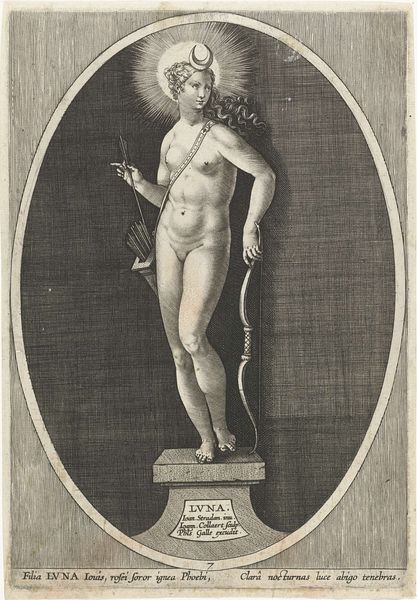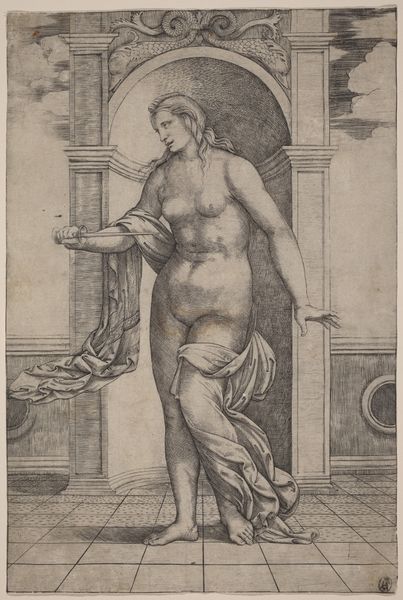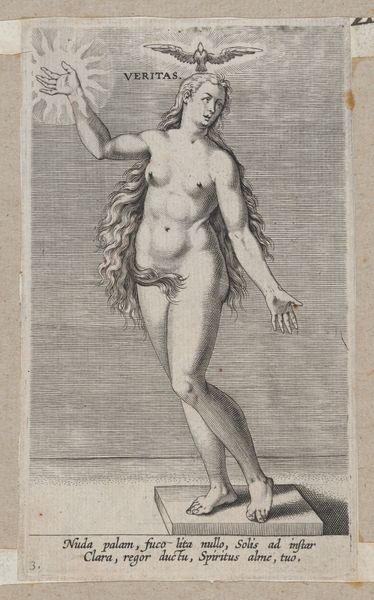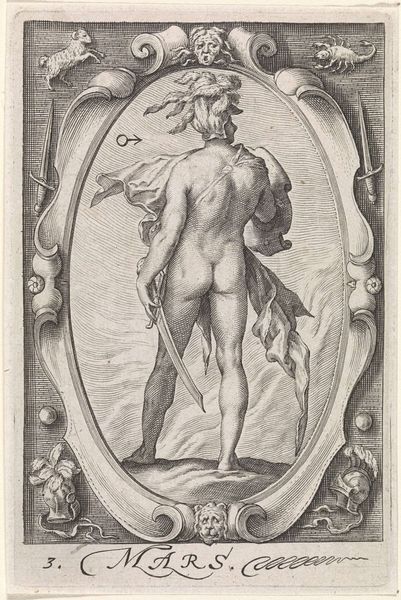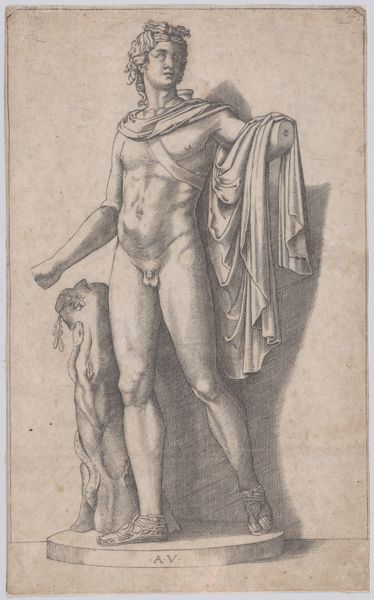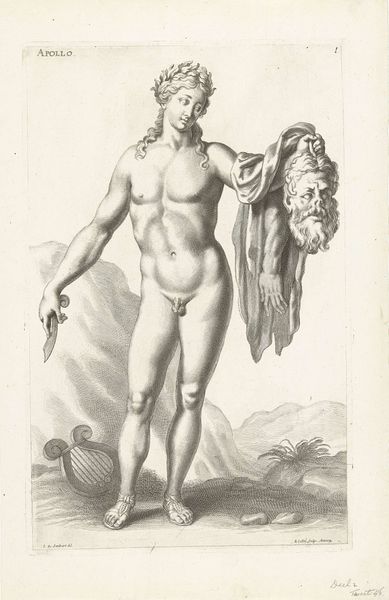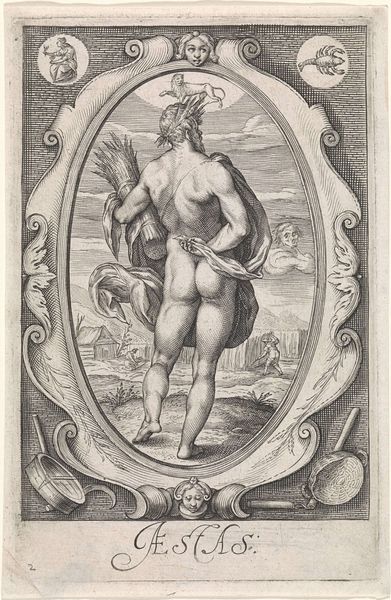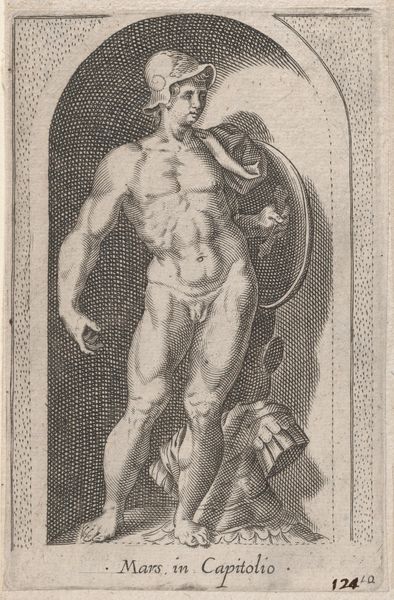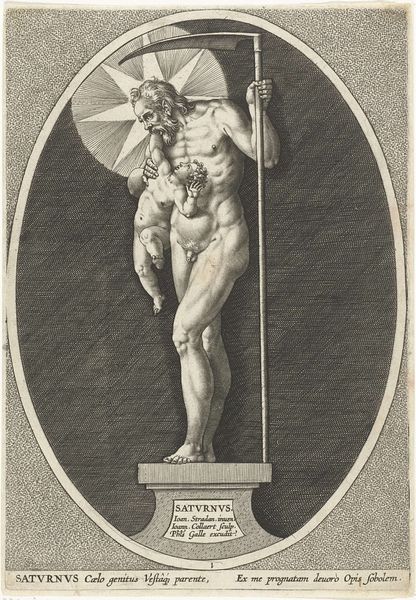
Dimensions: height 196 mm, width 136 mm
Copyright: Rijks Museum: Open Domain
Curator: Standing before us is "Venus," an engraving created by Jan (II) Collaert after 1585, now residing here at the Rijksmuseum. Editor: My first thought is how severe the Venus figure looks, the starkness of the engraving emphasizes the somber and statuesque qualities over what I think are common expectations of light or joy. The textures within the oval add a visual depth too, no? Curator: Exactly. Considering Collaert worked in Antwerp during a period of religious and political upheaval, it's crucial to consider how these societal tensions impacted artistic expression. The stern and less idealized depiction of Venus, the goddess of love and beauty, arguably embodies a shift away from purely celebratory depictions. How might her positioning on the pedestal be affected, given how religious structures impact female identity and social positioning even today? Editor: The placement feels less about veneration and more about symbolic isolation; however, one cannot dismiss that this engraving adopts classic iconic themes from the goddess' mythology. A starburst rests near her head, symbolizing her celestial connections. Her modesty and a seashell allude to Aphrodite’s birth from the sea and connection to marine cycles. She is contained within an oval frame, creating an enclosed visual world for the Roman goddess. I note how Venus is presented with a covered yet bare expression – could there be a commentary on societal expectations surrounding female beauty? Curator: Precisely. It is important to engage with feminist interpretations to examine how the artwork can be complicit or subversive. Her gesture towards partially veiling herself could reveal not humility, but a nuanced recognition of being viewed. Also, how are we positioned by the gaze given the text framing the engraving? Editor: And let’s examine the history embedded within the symbols! The Venus figure is meant to embody particular aspirations – here, the Roman ideal form meets the realities of the artist’s world, to showcase a timeless story. Curator: Indeed, bringing us back to a fundamental question: whose stories were these symbols meant to tell? What social commentary are we invited to examine and how might we bring it into current discourse around representations? Editor: Absolutely; reflecting on how symbols are always imbued with layers, how meaning morphs across eras, is key. It opens new possibilities for understanding shared visual languages of both the past and the present.
Comments
No comments
Be the first to comment and join the conversation on the ultimate creative platform.
